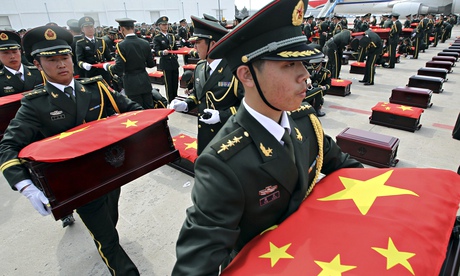
The National Forensic DNA Profiling Laboratory has identified ten more Rana Plaza victims who were buried without identification, officials said.
With the latest detection, the number of victims identified through DNA test rose to 210, causing a matter of little hope for the relatives who are yet to find out their beloved ones following the country's worst ever industrial disaster.
The DNA (Deoxyribonucleic acid) test came to spotlight few weeks after the multi-storied building collapse when the authorities concerned were not in a position to identify the trapped bodies as those were too decomposed.
They said the forensic lab of the Dhaka Medical College (DMC) has finished all necessary works on the samples collected from ten undetected victims and started preparing a complete report of the DNA profiling tests.
"We are hopeful of submitting the test report to the Ministry of Labour and Employment in the upcoming week," said Prof Sharif Akhteruzzaman, National Technical Adviser (NTA) of the DMC Forensic Lab.
Declining to disclose any further information regarding the issue, the professor said they have almost completed the DNA matching process. "But some minor works still remain incomplete," he added.
Another official at the Lab said relatives of the victims can claim compensation to the authority after successful completion of the DNA-matching process.
He said that the number of bodies identified through DNA now stands at 210 as the laboratory earlier delivered complete DNA report of 200 bodies to the ministry.
However, the authorities are yet to make any progress in respect of 112 bodies, whose collected samples are not matched yet.
Although a total of 548 DNA samples from victims' relatives were submitted to the laboratory against the 322 unidentified bodies, unfortunately 112 victims' DNA test did not match with any submitted samples.
Professor Akhteruzzaman said the DNA testing laboratory found mismatch with the collected samples and the samples given by the victims' relatives. For instance, the four bodies from which DNA had been collected for lab tests were taken and buried by people claiming to be the victims' relatives, without going through any test procedure. But later on three out of the four matched with the samples given by others, he added. Professor Akhteruzzaman expressed dissatisfaction at the process of handing over 800 bodies to relatives after the building collapse without having any DNA samples kept from either the victims or the relatives.
He, however, did not give up the hope regarding the identification of the remaining 112 bodies saying that certainly there is a way to detect them. But the procedure is very complex and without support from the government it is not possible to accomplish, he said.
"To identify rest of the bodies, we have to examine the DNA samples from all the relatives of the Rana Plaza victims who were buried without DNA tests", the professor added. He said the work is not simple as the victims' family members have already received some compensations, even in many cases they won't allow further tests.
"However, if the government takes effective measures with financial support for the large-scale testing procedures for the buried bodies it would be possible to make identification," he stated.
Shock gripped people all over the world on April 24 last year when the 9-storey commercial building that housed five apparel units collapsed within seconds at Savar, killing at least 1130 people and injuring hundreds others.
Friday 28 March 2014
http://www.thefinancialexpress-bd.com/2014/03/28/25789

